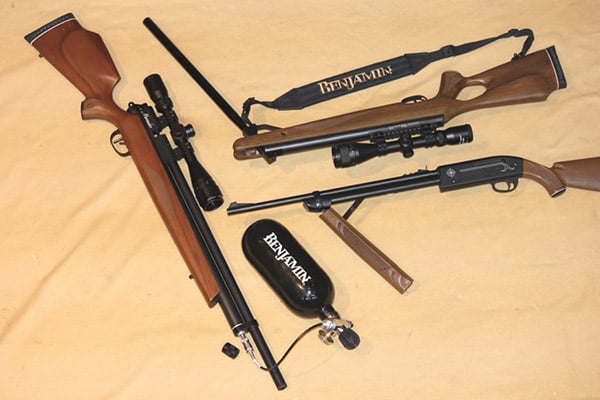
Last Updated on
By Tony Martins
For generations boys and girls have learned valuable lessons from the BB-gun. Those who didn’t have one wanted one. Despite the famous Hollywood narrative “… you’ll shoot your eye out” in the classic 1983 movie “A Christmas Story,” millions of kids continue to learn personal responsibility and fundamental shooting skills – and have lots of fun doing so – courtesy of airguns like the Daisy Red Ryder. But airguns are not just for kids anymore. In recent years, significant improvements in the accuracy, dependability and durability of airguns have been achieved. Companies such as Daisy, Beeman, RWS, Crosman-Benjamin, Gamo, FX, DayState, EAA, BSA, Legacy Sports International and many others have developed a remarkable variety of high-performance models often called “adult air rifles.” These powerful airguns are also suitable for youngsters with the skills and physical maturity to handle them, however. This article will focus on the more advanced rifle models designed for the serious airgunner who is interested in performance as well as the fun that performance affords.
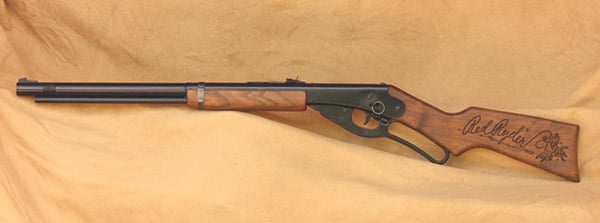
In my experience, it seems that a more direct correlation exists between cost and performance with airguns than most other shooting and sporting equipment. For example, are $3000.00 rifle scopes really 10-times better than those costing $300.00? And, what about $4000.00 vs. $400.00 centerfire rifles – are they 10-times more accurate? I think not. Rest assured however, that a $500.00 precision air rifle will deliver 10-times the performance (and value) of a $49.95 model sold by the local discount store! With so many available today, choosing the right airgun can be a daunting task. For me, it’s been much like the old Lay’s Potato Chip challenge: “Betcha can’t eat just one…” and I currently own enough airguns to fill a very large gun safe. There are both rifle and pistol (and convertible) models available in various sizes and weights, different power sources, prices ranging from under $100.00 to multiple-$1000’s, calibers ranging from .177 to .50 (and larger in custom guns) that shoot BB’s, pellets and slugs – and even arrows! And, there’s also an endless array of accessories and support paraphernalia. From plinking and target shooting (both recreational and competitive) to formal instruction and training, pest control and purposeful hunting for birds, varmints, small and even large game, airgun uses are many – and so are the reasons for using them. These include shooting where it’s illegal or impractical to discharge a firearm (within city limits and/or in the backyard, or in a building or a barn housing animals, for example), ammo that is both inexpensive and readily available, and quiet discharge with little or no recoil for comfortable all-day operation. Regardless of how a modern precision airgun is used or the reason for using it, pure shooting enjoyment will certainly follow.
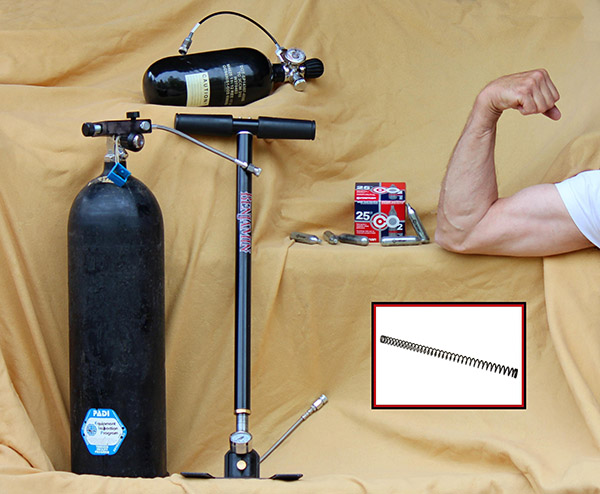
Airgun Power Sources
Airguns can be categorized in different ways, but the most common are by power source, caliber and intended use for the gun – which may have direct correlation to the caliber. Let’s first take a look at power sources, both major and sub-categories, and then examine which powerplants work best for the more popular applications.
Pneumatic Airguns
Air is compressed to provide the power in pneumatic airguns. The most common method to compress air in these guns is with an onboard pump that is typically operated by a forend lever. Multi-Stroke pneumatic airguns (also called pump-ups) are the most popular, requiring from 2-10 pumps to compress air in the chamber to sufficient pressure to launch a pellet from the barrel at sufficient velocity for an accurate shot. Most pump-ups are light-weight, low to medium power airguns with little recoil. Although I personally took hundreds of birds and small rodents with mult-stroke airguns like the Benjamin 392 on my grandparents farm as a youngster, you must make the first shot count when hunting with one of these pneumatics, as pumping 8-10 times to restore full power takes awhile, and makes enough commotion to scare the quarry! Single-Stroke pneumatic airguns require just one stroke to compress the air for a full charge. This system tends to be more consistent and accurate than the multi-stroke can killers, and is used to power many of the high-end air rifles and pistols typically found in 10-meter match competition. Air rifles like the Daisy Avanti 753 and 853 competition models, and pistols like the Beeman P3 in .177 caliber have tack driving accuracy at close range, but insufficient power for hunting anything but birds and the smallest rodents.

Although guns with compressed air reservoirs capable of delivering multiple shots have been around for more than 200 years, the modern Pre-Charged pneumatic (PCP) airgun was invented by the British, and thought to be derived from a gun that was modified to shoot tranquilizer darts through a large smooth bore. Its popularity is growing in leaps and bounds, and for good reason. Diversity is one of the attractions with the PCP’s, as a vast array of designs, power ranges and calibers are available. These guns have an onboard air chamber which is charged from an external source to an operating pressure of 2000 to 3200 psi (pounds per square inch), and this can provide as many as several hundred shots before refilling is necessary. PCP’s must have some type of internal pressure regulator to maintain shot-to-shot consistency and thus, are more complicated and typically more expensive than other airguns. A refilling or recharging apparatus is also necessary, which adds to the cost of operation. SCUBA tanks, carbon-fiber tanks and high-pressure hand pumps are typically used. The common 3000 lb. 80 cubic foot aluminum SCUBA tank is a popular choice for lower pressure PCP airguns, like the Crosman Challenger and Benjamin Discovery competition and target models. These operate at a maximum 2000 psi and must be reloaded (but not recharged) after each shot. For higher pressure and multi-shot applications, pricey carbon-fiber tanks with internal aluminum bladders, ranging in capacity from 6 to 97 cubic feet at a pressure of 4500 psi, are preferred. The largest of these tanks can refill the typical 150-200cc onboard reservoir in guns like the Benjamin Marauder and new Armada, BSA Scorpion and Ultra, Gamo Dynamax and new Coyote, FX Whisper T12, Cyclone and Verminator models several dozen times. High-pressure hand pumps are an economical option, ideal for getting started, and for the occasional shooter. They are often credited with the increased popularity of PCP’s, particularly the low-pressure models. Filling a high-pressure gun with one of these pumps however, will give you a workout! As reservoir pressure increases the effort to operate the pump also increases, and it takes 150-200 strokes to fully charge most guns.
PCP air rifles typically have excellent triggers, which is one of the reasons for their supreme accuracy. They have become the airgun of choice for open Field Target competition – where same-hole accuracy and enough power to knock over metal targets are prerequisites to scoring. They are also popular for hunting. The new Benjamin Armada Magpul Edition pictured here prints a single .22 caliber hole at 50 feet, and one ragged hole at 50 yards, with adequate power to cleanly dispatch vermin and small game.

Spring-Piston Airguns
These are probably the easiest type to operate and maintain, and they come in various shapes, sizes and powers. Spring-Piston single-shot airguns must be cocked prior to firing. This is accomplished either by lever – which can be attached under, atop or on the side of the gun – or by “breaking” the barrel at the breech so the barrel becomes the cocking lever. Underlever, overlever and side-lever airguns are cocked by working their levers. Break-barrel airguns however, are cocked by applying downward pressure on the barrel so it breaks at the hinge point between breech and stock. This action moves a piston backward inside the receiver while compressing a mainspring behind it. At the bottom of the downstroke, the trigger sear clicks into a notch in the piston and holds the entire mechanism under tension from the spring. A pellet can now be placed directly into the open breech. The barrel is then lifted to close the breech and the gun is ready to fire. When the trigger is pulled the piston is released and propelled forward by the spring, pushing a column of air that blasts the pellet resting in the breech out of the barrel. The greater the effort required to compress the spring when cocking the gun – ranging from less than 20 to more than 50 lbs. – the greater the velocity of the pellet on discharge – from around 500 to more than 1600 feet-per-second (fps) with light weight small caliber pellets. Dozens of spring-piston airguns are available in .17, .20, .22 and .25 caliber, from companies like Beeman, Crosman, Gamo, RWS/Diana and BSA – recognized as the inventor of the modern spring-piston airgun.

The action of the spring pushing the piston forward to launch the pellet causes recoil, and many firearms shooters like the familiar sensation, preferring spring-piston airguns to other types. Some high-end match grade spring-piston airguns actually have a second spring mechanism to counteract the mainspring when the gun is fired that virtually eliminates the recoil. Standard models may use spring dampening compounds and devices to reduce recoil. The disadvantage to this action-reaction is that “springers” as they are often called do not like to be rested to facilitate steadiness, and doing so can actually compromise accuracy. Another disadvantage is that virtually all spring-piston airguns have some degree of trigger creep, some more than others. Thus, although the accuracy of high performance spring-piston airguns can be exceptional, shooting one accurately takes some practice and conditioning. Routine maintenance will insure years of trouble-free use, and includes simple cleaning and oiling. Springs and piston seals will eventually wear out, but these can be replaced easily and inexpensively. Word of caution: Spring-Piston airguns should never be dry fired. If discharged without a pellet in the breech, the piston will bang into the front of the compression tube at full force, and this can cause significant damage to these internal components.
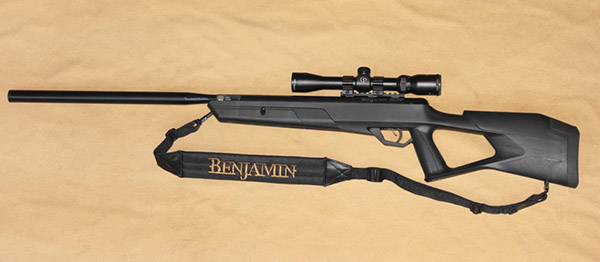
A derivative of the spring-piston action is the Gas-Piston action. These airguns are cocked and fired in the same manner as spring guns, but utilize a sealed gas cylinder to operate the piston instead of a spring. Air (or nitrogen) is sealed in the cylinder, and compressed with the cocking stroke to much greater internal pressure. Pulling the trigger allows the compressed gas to expand back to its original volume. This pushes the piston forward, forcing air into the compression chamber which generates enough energy to fire the pellet down the barrel. The air or nitrogen “gas” is retained in the sealed cylinder (also called a “gas-ram”) to be used repeatedly. The main advantage of this powerplant is the smoother and quicker shot cycle, as there is no metal spring rebounding inside the gun, and thus no spring torque that can affect accuracy. The comparatively quiet, smooth cocking and smooth shooting gas-piston airguns are quite durable, and feel even more like a firearm than the spring-piston airguns. Despite the fact that this new technology has been available for only a few years, there are almost as many gas-piston as spring-piston airguns available today. Manufacturers like Crosman/Benjamin (Titan, Nitro Venom, Regal and Trail NP lines), BSA (GRT line), Beeman (RX-2 line) and Gamo (Big Cat, Rocket and Whisper line) make dozens of models to choose from.
CO2 Airguns
As the name implies, these airguns operate on compressed carbon dioxide gas, contained in a disposable cylinder, or supplied from a bulk source. The disposable cylinder models are typically inexpensive and low velocity, designed for target shooting (both indoors and outdoors) by companies like Daisy and Crosman. These are the easiest of the airguns to operate, available in single-shot, repeating, semi-auto and even full-auto models. The semi-automatic versions might be considered the ultimate can killers, as the small CO2 cylinders will deliver 30-60 shots, while the newer, larger CO2 cylinders contain enough gas for 300-400 shots! There are some interesting airguns in this category, including the Crosman 1077 – a clone of the popular Ruger 10/22 semi-automatic .22 rimfire rifle that is remarkably accurate for an airgun selling for under $100.00 – the Beretta CX-4 Storm – with belt-fed magazine and the looks and feel of the 9mm semi-auto carbine it mimics – and the Benjamin Discovery competition air rifle – which is a “dual fuel” model, operating on air like a PCP or on CO2.
Airgun Applications
High-power precision airguns are excellent alternatives to firearms for marksmanship training, sport shooting fun, and pest control applications. They use air rather than gunpowder, so they are quieter, safer, less expensive to operate than firearms, and free from typical firearms licensing and registration requirements. Although we could probably title this section “1001 Uses for an Airgun” with little argument, instead we’ll focus on 3 main usage categories – Target/Competition, Hunting and Sporting (everything else) – and include major sub-categories for each.
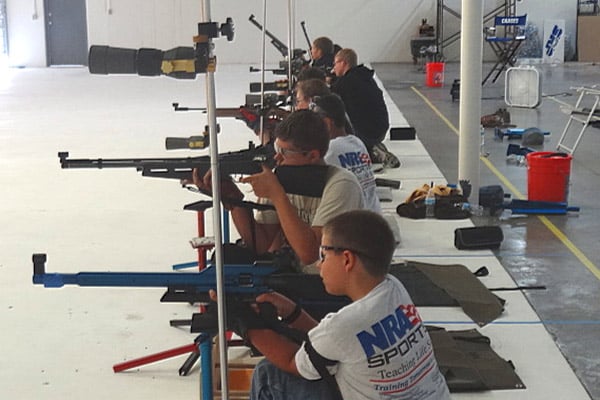
Airguns for Target/Competition
There are two main categories for competition airguns, match rifles (also known as 10-meter guns) and field target guns. Match rifles are almost always recoilless models that shoot .177 caliber pellets at low velocity (500-550 fps) with calibrated peep sights, as no optics are allowed. Various recoilless spring-piston designs were popular in the past, and single-stroke pneumatics also had their heyday, but despite their inherent accuracy, cocking these guns requires physical effort that can interfere with shooting steadiness. CO2 guns also had a run as top dog, but CO2 is more sensitive to temperature fluctuation and thus more difficult to regulate for precision accuracy than compressed air. Today pre-charged pneumatic designs dominate most match competitions, including the Olympics. Inexpensive 10-meter guns like the Daisy Avanti 853 (under $400.00) and the Crosman Challenger ($600-$700) are excellent starter rifles. Top-of-the-line production models from Anschutz and Feinwerkbau, featuring adjustable triggers, buttpads, combs and hand rests, will set you back considerably more ($3500.00 and up). Field target airguns must have more power than match rifles to knock down metal targets, but they are limited to a maximum of 12 foot-pounds of energy (fpe) to insure that competitions remain about accuracy and not about power. Some U.S. field target competitions allow airguns with velocities exceeding 800 fps that generate as much as 18-20 fpe. Targets are shaped like animals, with a small hole that varies in size based on distance to the target, and a metal disk behind. Pellets must pass through the hole in the target cleanly, and strike the disk with sufficient force to trigger a mechanism that drops the target. Field target competitions are typically divided into recoil and recoilless classes, with spring-piston airguns dominating the former and PCP’s the latter, all topped by precision optics with range estimating capability. A class for recoilless spring guns may also be offered at some events.

Airguns for Hunting
Successful hunting with an airgun is dependent upon two criteria – pellets delivered with sufficient energy to dispatch animals of the size hunted, and accuracy necessary to make clean, quick kills. Serious airgun hunters use scopes, as comparatively low power projectiles like pellets require precise shot placement. The energy delivered is a function of the weight of the pellet and its velocity at impact. Generally, the heavier the pellet the lower the velocity, but the energy generated by a heavy slow moving pellet will be substantially greater than the energy from a light pellet moving at high velocity. For example, .177 caliber alloy pellets weighing only 5 grains and flying at high velocity of 1200 fps generate almost 16 foot-pounds of energy (fpe) – enough energy to take rodents, crows, pigeons, tree squirrels and small rabbits weighing less than 5 lbs. with a well placed shot. Popular airguns like the Beeman Mach, BSA Supersport, Benjamin Trail and Gamo Whisper models deliver this level of performance. Conversely, .25 caliber lead pellets weighing 28 grains fired at moderate velocities of 700-900 fps generate 30-50 fpe – enough to take animals up to 50 pounds. The Beeman Kodiak may be the finest example of a spring-piston .25 cal. that generates 30 fpe, while the affordable (under $600.00) Benjamin Marauder PCP touches 50 fpe at the high end of this energy range. It is one of my .25 cal. favorites, and I have personally taken squirrels, rabbits, prairie dogs, Eurasian collared-doves and coyotes with this remarkably accurate and surprisingly powerful airgun. Watching a 300 lb. feral hog drop in its tracks from a perfectly placed head shot validated for me how deadly the .25 cal. Marauder can be with precision shooting! I consider this airgun to be the “ultimate urban coyote killer.” It and other .25 cal. PCP’s have been deemed safe for backyard use by the Game & Fish Department in my home State of Arizona, due to minimal penetration of the low energy light weight pellets they shoot.
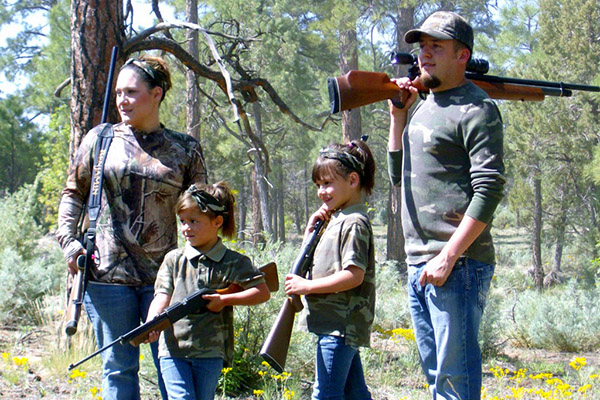
Tough animals and those weighing more than 50 lbs. require more energy to cleanly dispatch than what is delivered by most “pellet” rifles. This is the domain of the “Big Bore” PCP air rifles, in calibers .357 and larger, shooting heavy solid slugs that are more like firearms bullets than the lighter, hour-glass shaped pellets. Guns like the new Benjamin .357 Bulldog generate more than 165 fpe with bullets like the new 142 grain HHS by Precision Rifle – enough to take animals like wild hogs, pronghorn and whitetail deer cleanly out to 100 yards. And if really big game trips your trigger, consider the Quackenbush .458 LA Outlaw air rifle. With a stock proportioned and shaped like the Remington 700 centerfire rifle, it shoots a 430 grain bullet at 732 fps from a 25” barrel, generating more than 500 fpe at the muzzle! Animals as large as 2000 lb. plains bison have been taken with this powerful multi-shot PCP.
Note: Hunting with airguns will be covered in more detail in the 2nd part of this series.
Sporting Airguns
This is the catch-all grouping for all other airguns. If it’s not a Match or Field competition gun, and doesn’t have the power to kill game cleanly (10 fpe minimum) then it fits here. Low power air pistols and rifles popular for plinking as well as indoor target shooting comprise the bulk of this category. In other words: Fun guns. An excellent high quality example in this category is the Beeman R7. This spring-piston model is smaller, lighter, less powerful and less expensive, but with the same excellent trigger it’s nearly as accurate as the highly regarded Beeman R1 Supermagnum.
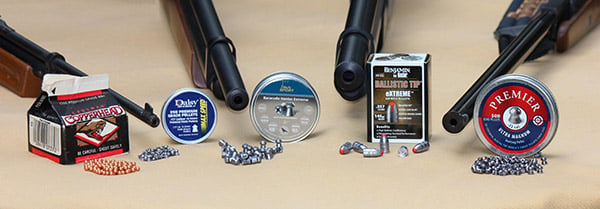
A Few Words On Pellets
Pellet quality is almost as important as the quality of the airgun itself. It makes no sense to shoot cheap, inconsistent pellets through a $1500.00 precision air rifle. They are made from lead, as well as copper and lighter metal alloys, and come in a handful of basic types and calibers. Flat-head or wadcutter pellets are flat on top, and used for paper target competition due to the cleanly cut holes they leave. Pointed pellets are designed to penetrate and are popular for hunting. Hollow-point pellets are used for silhouette competition as well as in the field based on the idea that they will expand on impact to create a larger wound channel. Domed or round-nose pellets are used where maximum knock down power is desired. Pellets are available in .177, .20, .22, .25, .30 and even .357 caliber, with .177 being the standard for all types of competition, including the Olympics. Lead slugs suitable for air rifle use (sometimes called pellets) are available in a variety of shapes, sizes, weights (from <50 to >500 grains) and calibers (from .25 to .50).
Airguns are excellent tools for teaching elementary marksmanship and gun handling, training that transfers directly to firearms. The comparatively low cost and safety of airgun shooting, and the fact that they can be used almost anywhere (indoors or out) makes them an excellent choice for year-round family entertainment. Modern precision airguns also offer adult sporting enjoyment that runs the gamut from casual relaxation to competitive challenge and from pest control to purposeful hunting for nature’s wild protein. Whatever trips your trigger, there’s an airgun and an airgun activity for everyone.





Comments (2)
Tony Martins | The Blog of the Gritr Sports Storesays:
June 23, 2015 at 2:35 pm[…] Airguns: They’re Not Just For Kids (Anymore) June 23rd, 2015 Mossberg vs. Remington: Which is Better? June 22nd, 2015 Five Outdoor Activities To Do With Dad June 19th, 2015 Tools To Practice Your Shot At Home June 17th, 2015 How To Choose An AR Stock June 16th, 2015 […]
Rob Pottersays:
June 25, 2015 at 11:12 amGood job Tony and no problem for the use of our club picture. Airgun/airsoft shooting sports have grown a lot. The airgun world now has action shooting sport https://www.facebook.com/147357898643437/videos/vb.147357898643437/889795564399663/?type=2&theater
Here is what it looks like when one shoot the whole course. https://youtu.be/buGgRVZ-cKo
Tony Martinssays:
June 26, 2015 at 8:51 pmThanks Rob. You have done a great deal to promote the airgunning sport, particularly in our home State of Arizona, and I always appreciate your help and expertise. Look for part 2 of this series “Hunting with Airguns” to be posted here soon – I think you will like it.